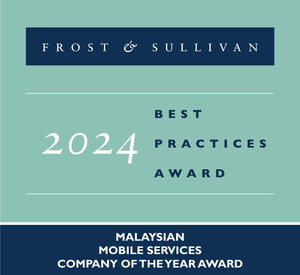Insurance Companies Use Emerging Technologies and Business Models to Shake Up Competition
Advanced technologies and evolving operations are opening growth opportunities in the industry, finds Frost & Sullivan
SANTA CLARA, Calif., Feb. 4, 2019 /PRNewswire/ -- Led by insurtech disruptors, novel business models are causing disintermediation in the insurance industry and altering power dynamics. The rise of technologies such as Artificial Intelligence (AI), Internet of Things (IoT), and smart devices is placing the spotlight on flexible services based on usage-based insurance, on-demand insurance and Prevention-as-a-Service models, which are redefining the role of insurance in people's lives. These models will especially appeal to Millennials and Generation Z, the newest buying groups.
To discover the key highlights of this analysis, access our complimentary on-demand webinar: http://frost.ly/360
"Lines of business such as liability, property, and casualty will especially gain from models such as Prevention-as-a-Service," said Lauren Martin-Taylor, Visionary Innovation Principal Consultant at Frost & Sullivan. "Even though insurtechs and start-ups are leading in addressing shifts in social, mobility, and technology trends by pioneering innovative business models, traditional insurers often back them or play an integral role."
Frost & Sullivan's recent analysis, The Future of Insurance, analyzes emerging insurable markets and business models, evolution in operations and the value chain, as well as disruptors and opportunities in various lines of insurance. It also covers technologies such as AI, augmented reality/virtual reality (AR/VR), blockchain, wearables, implants, self-healing materials, and automation. An overview of the trends and challenges in each market is presented along with industry best practices, notable activity, and case studies.
Forward-thinking insurers will look to realign their business strategies to tap the growth opportunities presented by:
- Medical advances, wearables, and growth of the elderly population.
- Rise in urban population density, particularly in Asia and Africa.
- The largely untapped low-income demographic in developed countries, which holds huge potential for microinsurance and automation advances.
- Biological augmentation technologies, which can transform the markets for life insurance and reinsurers.
- High levels of digitization, increasing data breaches, and cyber threats.
"The auto insurance industry will be one of the most affected by the rising adoption of advanced technologies, as connected and autonomous vehicles will generate real-time data and improve underwriting accuracy," noted Taylor. "In due course, the focus will shift from insuring drivers to insuring the vehicle, systems, and technology."
The Future of Insurance is part of Frost & Sullivan's global Visionary Innovation (Mega Trends) Growth Partnership Service program.
About Frost & Sullivan
For over five decades, Frost & Sullivan has become world-renowned for its role in helping investors, corporate leaders and governments navigate economic changes and identify disruptive technologies, Mega Trends, new business models and companies to action, resulting in a continuous flow of growth opportunities to drive future success. Contact us: Start the discussion.
The Future of Insurance
K339-MT
Contact:
Francesca Valente
P: +54 11 4777 5300
E: [email protected]
SOURCE Frost & Sullivan
Related Links
WANT YOUR COMPANY'S NEWS FEATURED ON PRNEWSWIRE.COM?
Newsrooms &
Influencers
Digital Media
Outlets
Journalists
Opted In






Share this article